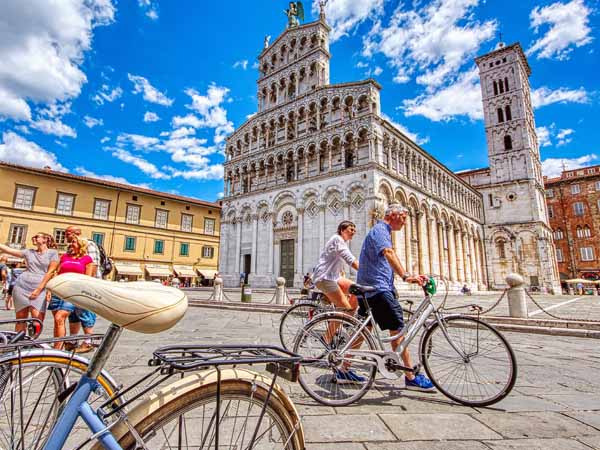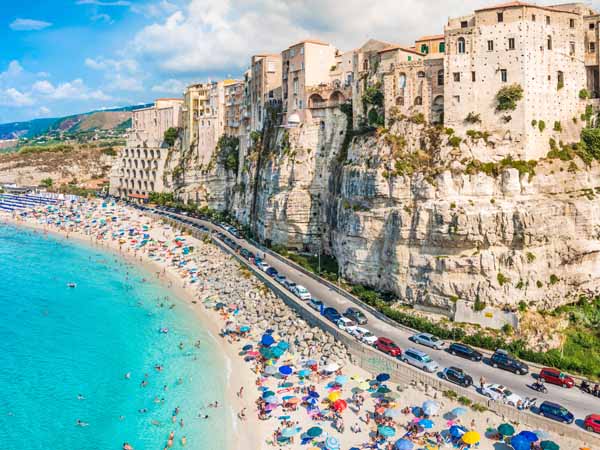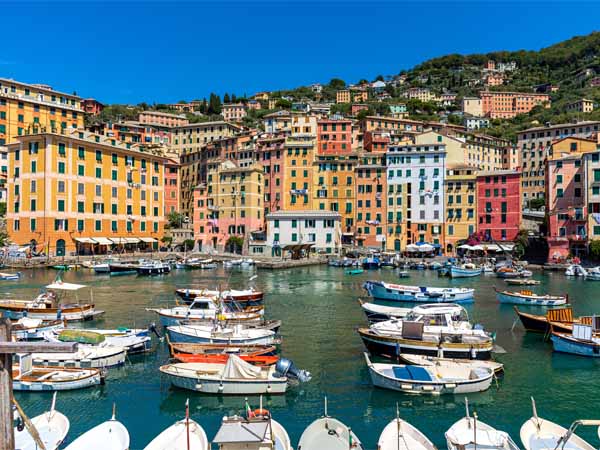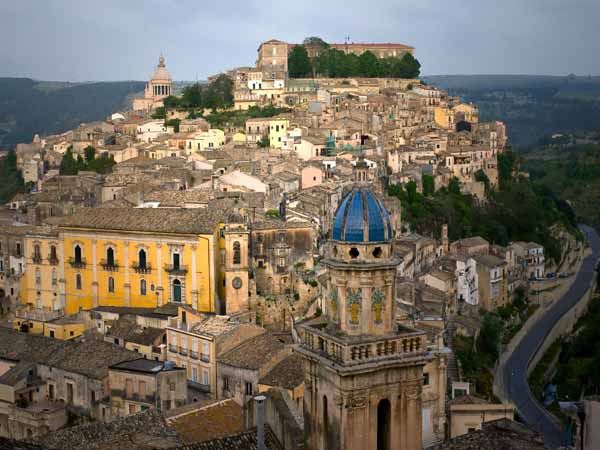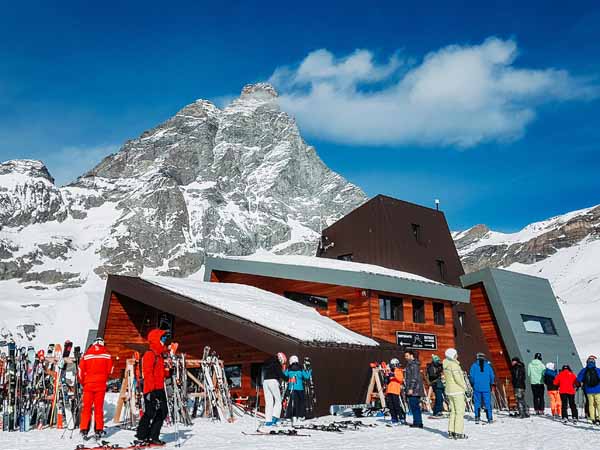Off the Beaten Path: 5 Lesser-Known Italian Sites You Should Visit
Embark on a journey to uncover Italy's hidden treasures with our comprehensive guide to five lesser-known destinations that will leave you in awe. Dive into the fascinating world of the Cava Museo in Tuscany, where history and art blend seamlessly. Marvel at the intricate mosaics of Palermo's Martorana, a true masterpiece of Sicilian culture. Explore the enchanting Underwater Archaeological Park of Baia, a submerged wonder filled with ancient ruins and captivating stories. These off-the-beaten-path destinations offer a glimpse into Italy's rich history, artistic heritage, and breathtaking natural beauty. Whether you're a history enthusiast, an art lover, or a nature explorer, these hidden gems promise unforgettable experiences. Discover the charm of Italy beyond its famous landmarks and immerse yourself in unique adventures that showcase the country’s unparalleled diversity. From cultural treasures to natural wonders, this guide is your key to experiencing Italy like a local. Perfect for travelers seeking authentic and extraordinary journeys, these destinations are sure to inspire your next Italian getaway. Start planning your adventure today and uncover the magic of Italy's best-kept secrets!
Discover Italy’s Hidden Gems Beyond the Tourist Trails
Italy is a land of endless wonders, from the iconic Colosseum in Rome to the romantic canals of Venice. But beyond these world-famous landmarks lies a treasure trove of hidden gems that remain off the beaten path, waiting to be discovered. For those seeking a unique and unforgettable experience, here are five lesser-known places in Italy that will leave you in awe.
Cava Museo (Carrara, Tuscany)
Located just an hour outside of Lucca, in the Apuan Alps, lies an open-air museum in the heart of Carrara's marble quarries. Cava Museo or more formally known as, Fantiscritti Quarry Museum, is a marvel dedicated to the ancient art and history of stone extraction and craftsmanship. The dramatic setting itself offers towering rock walls and an atmosphere that feels almost otherworldly.
The quarry itself has a rich history dating back to Roman times. It's name comes from an ancient Roman bas relief which depicts Hercules, Bacchus, and Jupiter. Evidence suggests the Romans began mining the marble and even used it in other famous structures such as the Pantheon and Trajan's Column. It's pure white, vein-less quality has become synonymous with classical beauty that has been sought out by sculptors for centuries. Most famously, Michelangelo regularly sourced marble from the quarries for his works, including the impressive statue of David.
The museum itself showcases the artistry and labor that has shaped the region's construction heritage. Visitors can explore the above ground quarry but can also visit the underground tunnels and get a glimpse into the extraction process while learning about the geology and cultural significance. No museum would be complete without art, and this is no exception! Local artists have created various murals and sculptures for viewing alongside, stone-carving demonstrations, a replica of a typical quarry man dwelling, ancient tools, and life-sized sculptures. With its combination of history, geology, and art, the Cava Museo is an immersive experience, offering something truly unique for history buffs, and curious travelers alike.
The Martorana (Palermo, Sicily)
Hidden within the charming Piazza Bellini lies a true gem of Palermo's rich past—Santa Maria dell’Ammiraglio, or St. Mary of the Admiral, more commonly known as The Martorana. This hidden masterpiece offers visitors a serene escape into history and art, standing as a testament to Palermo's time as one of the wealthiest ports in Western Europe.
The church was commissioned in 1143 by Admiral George of Antioch as an offering of gratitude for the Virgin Mary's protection. Originally built in the Arab-Norman architectural style, The Martorana has been shaped by a variety of cultural influences over the centuries. A Romanesque bell tower was added in the 13th century, while the Spanish Baroque facade was introduced in the 17th century. Despite these transformations, the church retains its original mosaics, created by Greek artists, which remain among the oldest in Sicily.
The mosaics, completed in 1151, have remarkably endured through the centuries, with more than half still intact. The centerpiece of these glittering works is the dome's "Christ Seated Blessing." Visitors can also marvel at other golden mosaics, such as the Nativity and the Dormition of the Virgin, which adorn the barrel vaults and arches. Intricate frescoes and carved inscriptions further enhance the church’s grandeur, showcasing a stunning blend of architectural styles. At the entrance, two of the three original mosaics that once adorned George's tomb have survived the test of time and remain on display.
In 1433–34, during the reign of King Alfonso of Aragon, a convent was added to the church, which has since been widely referred to as La Martorana. The nuns of this convent became renowned for their marzipan creations, known as Frutta di Martorana. These intricately shaped and dyed confections, designed to resemble various fruits, remain a beloved treat and can still be found in pastry shops throughout Palermo. Beneath the marble-inlaid flooring of the presbytery lies the ancient burial crypt of the nuns. These crypts are connected by passageways that once allowed the nuns to enjoy a hidden view of the bustling town squares, Piazza Bellini and Piazza Pretoria.
While Palermo is celebrated for its vibrant markets and tantalizing street food, The Martorana offers a tranquil retreat into the city’s layered history. This extraordinary church is a must-visit for anyone captivated by the unique convergence of cultures that define Sicily.
Galleria Nazionale di Palazzo Spinola (Genoa, Liguria)
Nestled among the charming streets of Genoa's historic district lies a stunning aristocratic palace turned national gallery. The Galleria Nazionale di Palazzo Spinola offers art lovers and history buffs a different museum experience.
Built in 1593 by Francesco Grimaldi, the palace was intended to be added to the list of select, private residences that would house important guests of the Republic of Genoa during visits. The palace remained in the Grimaldi family until 1650, when ownership was transferred to Ansaldo Pallavinci. Through marriage, the palace eventually passed through the Pallavinci family to the Doria family and then to the House of Spinola.
During the House of Spinola ownership, Maddalena Spinola commissioned several well known artists to create an illusionist ceiling painting, frescoes, and build the gallery of mirrors. During the Napoleonic occupation, many works of art were sold. However, The palace still maintains an extensive art collection which includes paintings by Luca Cambiasi, Bernardo Castello, and Bernardo Strozzi. The first floor keeps to the original 17th century housing and artistic style while the second floor showcases the 18th century Spinola desire for renewal. The third floor of the palace was used as private quarters while the fourth floor was designated for servants.
During the second World War, the palace suffered damage to the third and fourth floors and sadly did not retain their historical appearance during reconstruction. In 1958, the Spinola family donated the palace along with its furnishings, artwork, ceramics, silverware, and books to the government with the agreement that the main floor be preserved and a gallery be opened on the third and fourth floors. Visitors can wander through all four floors of lavishly decorated rooms filled with Italian masterpieces, period furnishings, and artifacts that showcase the opulent lifestyle of Genoese nobility.
Unlike the bustling galleries of Florence or Rome, this museum offers a tranquil and intimate experience. It’s a chance to admire incredible art without the crowds, all while soaking in the charm of a historic palace.
Underwater Archaeological Park of Baia (Baia, Campania)
Situated in the shadow of Mount Vesuvius, just beneath water in the Gulf of Naples lies The Underwater Archaeological Park of Baia. The park allows visitors the once in a lifetime opportunity to get up close and personal with an ancient Roman city referred to as the "Atlantis of Rome."
During Roman times, the cities of Baia, and Capo Miseno, along with the Port of Julius, were healthy, thriving locations. Baia was a popular, wealthy residential city; Port Julius was a busy commercial port, and Capo Miseno was a military base. Unfortunately, the volcanic activity can cause the phenomenon "bradyseism" or the elevation and lowering of the ground level due to changes in the volume of a magma chamber. In the 4th century AD, the magma chambers emptied, causing the half of the area to sink 20 meters into the ocean where it lay forgotten.
Although aerial photos uncovered the archaeological area of Port Julius in the 1940s, the first underwater campaign did not begin until 1960s. Since then, archaeologists and divers have worked to map out and protect this piece of Roman history. Today, visitors can choose their form of adventuring to see the ruins. Whether it be by glass bottom boat or diving into the waters, visitors can see the uncovered remains of the once wealthy and thriving Roman hub. From remarkably preserved villas, sculptures, and mosaics, to ancient Roman bathhouses, the ruins offer a peek into the lavish and carefree lifestyle of the Roman elite. This unique site offers an unparalleled blend of history and adventure.
Arte Sella (Borgo Valsugana, Trentino-Alto Adige)
Situated in the serene forests and fields of Sella Valley, an open-air contemporary art museum that beautifully merges creativity with nature. Arte Sella features stunning installations crafted from natural materials like wood, stone, and leaves. The artworks blend seamlessly with the surrounding environment, creating a harmonious and thought-provoking experience.
Opened in 1986, the museum showcases the relationship between people and their respect for nature. At the early stages of opening, a few key principles were established in order to not only protect the nature but also inspire the artists. The principles are as follows:
- Nature must be defended as a treasure chest of memory.
- The artist is not the absolute protagonist of the work of art but accepts that nature completes his work.
- Nature is no longer just protected, but also interpreted in its absence: therefore the relationship with ecology changes.
- The works are placed in a hic et nunc and are built favoring natural materials. They emerge from the landscape to return to nature.
The museum not only showcases finished pieces but showcases the entire creative process for pieces that are continuously in progress. Aside from the extravagant art, the museum and valley also host concerts, theater, and more. Arte Sella isn’t just an art exhibit—it’s a journey of inspiration and tranquility. Whether you’re an art enthusiast or simply looking to reconnect with nature, this destination offers a refreshing perspective on creativity.
Step Off the Beaten Path and Experience the Real Italy
Italy’s charm lies not only in its famous landmarks but also in its hidden treasures that offer unique and intimate experiences. From the dramatic landscapes of Cava Museo to the underwater wonders of Baia, these lesser-known destinations provide a deeper connection to Italy’s rich culture, history, and natural beauty.
So, why not step off the beaten path and add these hidden gems to your Italian adventure? You’ll discover a side of Italy that mostly the locals and few travelers get to see, creating memories that will last a lifetime.

